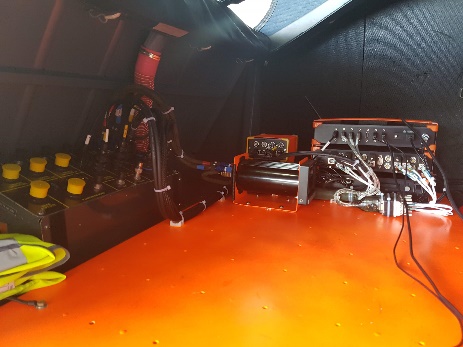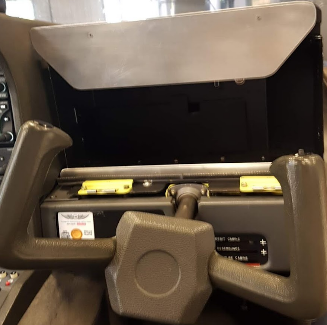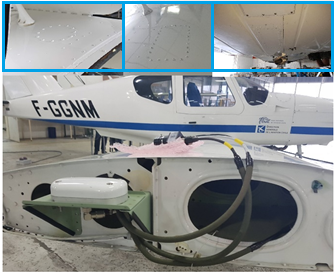ENAC’s flying test bed


The PFV (French acronym for Flying TestBed), is a Socata TB10 aircraft originally operated for pilot training and now modified to test new concepts or on-board equipment in various research fields. Socata TB10 is a single engine, 4 seats and short haul aircraft, generally used for touring or flight instruction. The PFV has been funded by the city of Toulouse, the Occitanie Region and the French Ministry of Sustainable Development in order to support research in the human-factors’ for aviation domain and foster partnerships between industry and academia. The PFV has been certified by EASA in order to be operated in 3 modes: pilot training, data gathering (‘big data’ mode) or ‘research mode’ (right side of the cockpit emptied of original instrumentation and fitted with prototype HMI). Several aircraft are operated as flying testbed in Europe, PFV’s specifity is its ability to test light equipment, HMIs or run human factors research with low operation cost and even record data during pilot training.
Data acquisition system
The PFV is equipped with a versatile Dewesoft data acquisition system which gathers information coming from avionics systems and sensors. This information can be recorded and delivered in real time via a Wi-Fi network. New equipment can be added and connected to the system or antennas on the payload. New equipment can be attached on the orange tray, energy and network connection are available on the left panel. Additionnal Dewesoft equipments can be connected to the main data computer. In order to guarantee a correct synchronization of data between ground systems and aircraft data, the main computer uses the GPS time stamp of a dedicated GPS device. A gigabit switch provides Ethernet connection as well as synchronization triggers generated by the main computer.

Figure 1: payload and data acquisition system
The right side of the cockpit when in research mode, can be equipped with prototype instrumentation and connected in real time to the data acquisition software. Physiological sensors may also be connected to feed those HMIs. For example, it would be possible to develop new analysis tools for flight instructors or new interfaces for pilots. The latter could be tested in flight while keeping a safety pilot in the left position.
In Figure 2, the left picture shows the available area for prototyping. Several energy and network connectors are available as well as a 10 wire cable connected to the payload area for general purpose input/output (GPIO). The right picture demonstrates the feasibility of a prototyping area setup with two Microsoft Surface tablets, one with the output of Tobii Pro Glasses 2, a wearable eye tracker, the other with gauges fed with data coming from the Dewesoft acquisition system. A 10 wire cable is also available under pilot’s seat in order to provide GPIO or energy to devices like shakers.

Figure 2: HMI prototyping area in the right side of cockpit
Additionnal antennas
The PFV allows to test new types of antenna, several dedicated spaces have been made in its structure for this purpose (figure 3 top) and coaxes cables are connected to the cargo hold. There is also one multiband GPS antenna (figure 3 bottom) available per wingtip for applications like attitude assessment.

Figure 3: additional GPS antennas and spare rooms for new one
Stereoscopic camera system
Two high performance monochrome cameras have been placed one per wingtip for detect and avoid applications or precise localization and mapping.

Figure 4: stereoscopic camera system
Data acquisition and real time delivery
All the data coming from systems like the avionics (GPS, XPDR, ADS-B in, EFIS), the engine, the IMU (inertial measurement unit), the pilot’s command (via sensors), the attitude indicator are recorded and broadcasted by the data acquisition system in real time at high speed. The broadcasted data can be displayed by the DewesoftX3 software or delivered to third party HMI via a network connection to the data acquisition system. The on board recording device has a 400 flight hour capacity making it useable for ‘big data’ and training operation modes. If video from both camera is added, 70 flight hour can be recorded.
Aircraft operation
The PFV is operated and maintained by ENAC personnel at one of ENAC’s flight school in a small airport near Toulouse. Providing that flight tests are compliant with the certifications modes: ‘big data’ (data gathering with original instrumentation) or ‘research’ (data gathering with prototype instrumentation) there is no need of special flight permit to be delivered by the civil aviation authorities. In research mode, a ‘safety pilot’ is mandatory. ENAC’s maintenance facility has the ability to realize modifications on the PFV and finalize the necessary certification process.